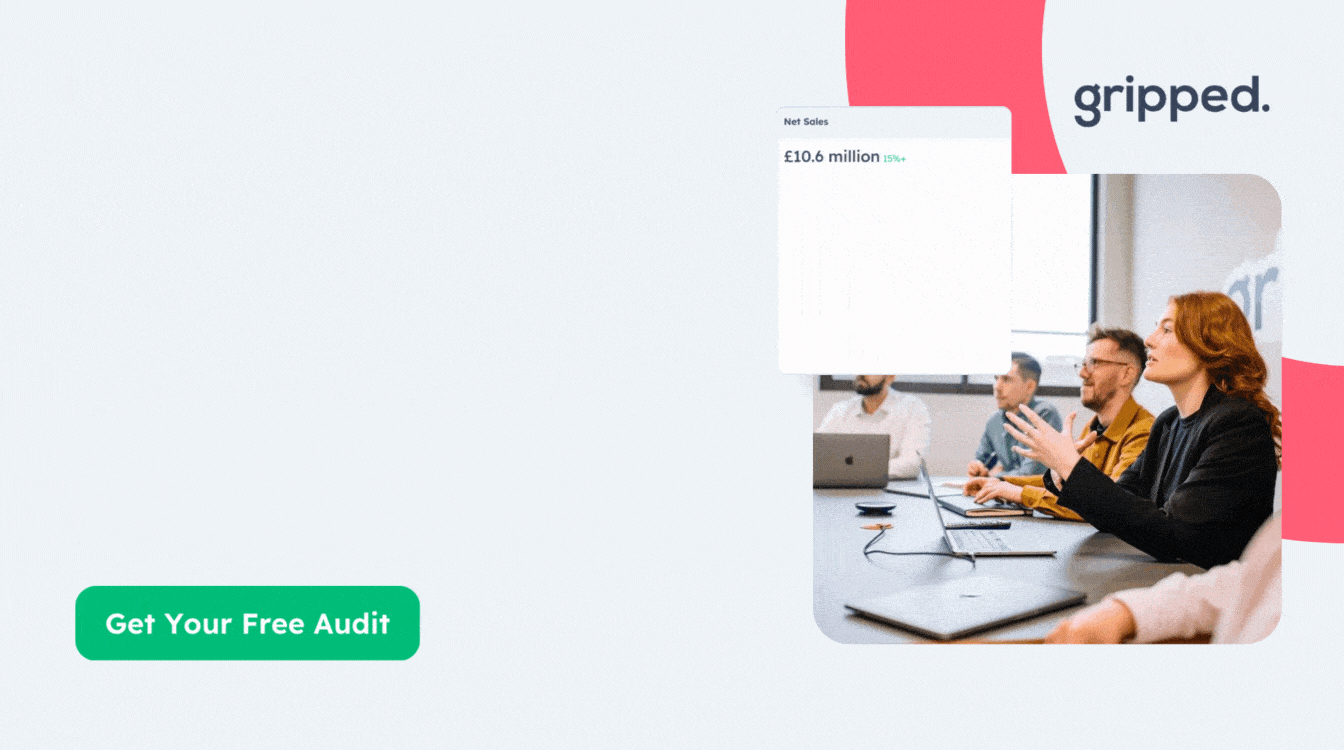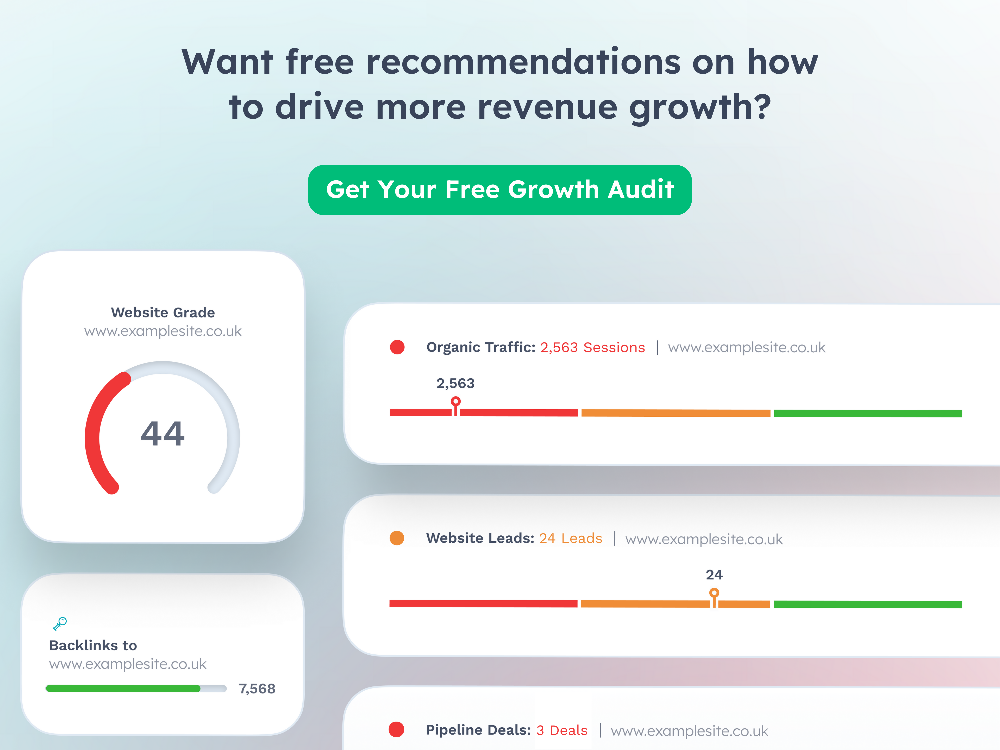The SaaS market is getting increasingly competitive and finding new ways of generating demand for your products or solution is crucial for sustainable growth. Lead generation strategies just don’t cut it anymore, and trying to force buying actions is becoming less effective as B2B prospects increasingly want to buy their way, on their terms.
A B2B digital marketing strategy such as demand generation approaches buyer journeys from a different angle by prioritising buyer experience and accepting that quality over quantity will drive sales and revenue.
In this article, we will touch on the approach of demand generation and explore ten effective B2B demand generation tactics that can contribute to SaaS growth.
Understanding B2B Demand Generation
Before we dive into tactics, let’s first cover the key principles of demand generation. Effective demand generation involves a strategic approach that aligns marketing efforts with sales and business goals.
In short, demand generation is an acceptance that someone is either in-market, or not. It is a buyer-centric strategy that moves away from traditional lead generation. Instead, it focuses on always being in front of your target audience and building trust that will result in genuine demand, pipeline and revenue.
Some of the key principles of B2B demand generation are:
- Targeted Audience: Identify and understand your target audience’s pain points, needs, and preferences to tailor your marketing messages effectively.
- Integrated Campaigns: Implement a multi-channel approach, combining online and offline tactics, for maximum reach and engagement.
- Compelling Content: Create high-quality, valuable content that educates, inspires, and addresses your audience’s challenges. Content is the lifeblood of demand generation, positioning you as a thought leader and building trust with your audience.
- Personalisation: Deliver personalised experiences to your prospects based on their demographics, interests and behaviour to enhance engagement.
With effective demand generation strategies in place, your SaaS business can establish itself as a trusted authority in your industry. By consistently delivering valuable content and engaging experiences, you can build credibility and gain the trust of your target audience. This trust forms the foundation for long-term relationships and convinces more of your target market to reach out to you when they become in-market.
The Importance of a Multi-Channel Approach
When it comes to B2B demand generation, integrating online and offline tactics is crucial to maximise your reach and impact. By utilising a multi-channel approach, you can engage with your target audience across various touchpoints, increasing the chances of capturing their attention and driving conversions.
A multi-channel approach also allows for greater flexibility and adaptability. By diversifying your marketing channels, you can ensure that you are not solely reliant on one platform or method and can craft your buying journeys around how your audience buys.
Integrating Online and Offline Tactics
While digital marketing has become increasingly prevalent, offline tactics still hold huge value in B2B demand generation. By combining the power of online and offline strategies, businesses can create a cohesive and comprehensive marketing campaign.
Offline tactics, such as attending industry or hosting one-to-few events, provide valuable opportunities for face-to-face interactions. These events allow SaaS companies to showcase their expertise, solutions and establish personal connections with potential clients. Additionally, offline tactics can help build brand credibility and trust, as they demonstrate a commitment to engaging with customers in a more traditional, tangible way.
On the other hand, online tactics offer numerous advantages in terms of reach and scalability. Through mediums such as social media and digital advertising, businesses can target specific demographics and interests with precision. Online platforms also provide the opportunity for real-time engagement and immediate feedback, allowing businesses to adjust their strategies on the fly.

Exploring 10 Effective B2B Demand Generation Tactics
Now let’s delve into the ten effective B2B demand generation tactics that can drive growth for your SaaS business (forgive us, we have to cover the obvious ones first):
Content Marketing
Content marketing is an integral part of B2B demand generation. Producing high-quality, relevant content establishes your brand as a thought leader and helps build trust with prospects. Create informative articles, thought leadership, industry research, case studies, videos and more to engage your target audience and demonstrate your expertise.
When it comes to content marketing, it’s essential to understand your audience’s pain points and provide valuable solutions. By addressing their challenges through your content, you position yourself as a trusted advisor, making it more likely for prospects to choose your products or services.
Content marketing allows you to establish a long-term relationship with your audience. By consistently delivering valuable content, you can build awareness, nurture your audience, and increase customer acquisition.
Social Media
Social media platforms provide an excellent opportunity to connect with your target audience and amplify your brand’s reach. Use social media channels strategically to share valuable content, engage in conversations, and build relationships with prospects and industry influencers.
When using social media for B2B demand generation, it’s crucial to choose the right platforms for your target audience. LinkedIn, for example, is a popular choice for B2B marketers due to its professional nature and ability to connect with decision-makers.
Remember, social media is not just about broadcasting your message; it’s about creating meaningful interactions. Engage with your audience by responding to comments, asking questions, and participating in relevant industry discussions. This will help you build a community around your brand and establish yourself as a trusted source of information.
Email Marketing
Email marketing has lost a lot of popularity as a channel, but remains an effective way to remain in front of, and nurture your audience. Segment your email list based on demographics, preferences, and behaviour to deliver targeted messages that resonate with your audience.
Personalisation is key when it comes to email marketing. Tailor your messages to the specific needs and interests of your recipients. This way, you can increase open rates, click-through rates, and ultimately, conversions. You can also use dynamic content and automation tools to deliver the right message to the right person at the right time.
Leverage third party authority, segmented use cases, and language nuances depending on your audience. Say goodbye to the generic email nurture after someone downloads content — it’s not going to turn into a sales conversation — it’s time for SaaS marketers to ditch the lazy emails.
SEO
When it comes to SEO, it’s important to focus on both on-page and off-page optimisation. On-page optimisation involves optimising your website’s structure, content, and meta tags to make it more search engine-friendly. Off-page optimisation, on the other hand, involves building high-quality backlinks from reputable websites to improve your domain authority.
SEO is not just about ranking higher on search engine results pages; it’s also about providing a great user experience. Ensure that your website is fast, mobile-friendly, and easy to navigate. This will not only improve your search engine rankings but also increase the chances of converting visitors into leads or customers.
It’s important to make sure your target keywords are aligned with how your audience buys and what they search for. This can’t be executed well without speaking to them — so make sure you’re leveraging your sales team and talking to existing customers.
Virtual & Physical Events
Webinars and virtual events offer an interactive platform to showcase your expertise and engage with prospects. Host informative sessions that address industry challenges and provide practical solutions. Encourage audience participation through Q&A sessions and polls to foster engagement and generate leads.
Webinars and virtual events are particularly effective for B2B demand generation because they allow you to demonstrate your product or service in action. By providing valuable insights and real-world examples, you can build credibility and trust with your audience. Try and collaborate with respected influencers or relevant leaders from your target audience to create events that will pique interest.
Beyond the obvious industry events, you can leverage other types of physical events to effectively engage your target audience. Consider hosting closed group events at your offices or in a hired location. These could be industry panels, networking events, or intimate training sessions as a few examples.
Influencer Marketing
Influencer marketing entails collaborating with industry experts and thought leaders who have a significant following in your target market. Partnering with influencers can help you expand your reach, gain credibility, and tap into their established audience base.
When choosing influencers for your B2B demand generation campaigns, it’s important to consider their relevance and authenticity. Look for influencers who have expertise in your industry and align with your brand values. Additionally, consider the size and engagement of their audience to ensure maximum impact.
There are various ways to collaborate with influencers, including sponsored content, guest blogging, and social media takeovers. By leveraging their expertise and influence, you can reach a wider audience and generate more qualified leads for your SaaS business.
Targeted Advertising
Targeted advertising allows you to precisely reach your desired audience with relevant messaging. Platforms like Google Ads, Microsoft Ads let you target based on intent and social media platforms such as LinkedIn offer advanced targeting options, enabling you to segment your audience based on demographics, interests, and behaviours.
When it comes to targeted advertising, it’s important to define your audience personas and tailor your messaging accordingly. By understanding your audience’s pain points, motivations, and preferences, you can create ads that resonate with them and drive action.
Furthermore, targeted advertising allows you to track and measure the effectiveness of your campaigns. Use analytics tools to monitor key metrics such as click-through rates, conversion rates, and return on ad spend – but make sure you’re tying this all to pipeline and revenue. This data will help you optimise your campaigns and allocate your budget more effectively.
Affiliate & Partner Marketing
Affiliate marketing involves partnering with businesses that promote your products or services in exchange for a commission or as part of a two-way referral agreement. This tactic leverages the affiliates’ existing audience, extending your reach and driving qualified traffic to your website.
When implementing an affiliate marketing program, it’s important to choose affiliates who align with your solution and target audience. To ensure the success of your affiliate marketing program, provide affiliates with the necessary resources and support. This can include promotional materials, product demos, and exclusive offers.
Customer Testimonials and Reviews
Customer testimonials and reviews play a crucial role in establishing trust and credibility. Encourage satisfied customers to provide testimonials and share their positive experiences. Display these testimonials on your website, landing pages, and social media platforms to influence potential prospects.
When collecting customer testimonials, it’s important to gather a diverse range of feedback. Reach out to customers at different stages of the buyer’s journey and from different industries or sectors. This will provide a well-rounded view of your products or services and appeal to a wider audience.
Encourage customers to leave reviews on third-party platforms such as Google, Trustpilot, G2, Clutch, Capterra or other industry-specific review sites.
Sales Intelligence & Analytics
Build and share a weekly sales intelligence report that covers top engaged accounts, top engaged job titles, top performing messaging, returning leads to site, additional leads from known accounts and anything else sales will find useful to support their outreach.
Sales intelligence keeps you aligned and in communication with sales teams and squeezes more out of your audience. Make it a two-way conversation and leverage their insights as new things to test in your campaign.
In Summary: Align B2B Demand Generation Tactics to How Your Audience Buys
By understanding your target audience, implementing a multi-channel approach, and creating valuable content, you can attract your ideal prospects and convert them into loyal customers. Crucially, this is on their terms, and you’re building a buying journey around the way that they want to buy. Continuously talk to your buyers, and measure and refine your strategies in the context of pipeline and revenue to achieve long-term success.
Ready to break the shackles on your MQL targets? With Gripped, we’ll help you align with sales around revenue KPIs and drive more pipeline and growth for your SaaS business. Start with a free growth audit today.

